By Daniel Bullen
The class conflict that led the colonists to oppose British rule did not end with the Declaration of Independence. It flared up within Washington’s army when soldiers protested their lack of pay, and it continued after the Treaty of Paris was signed.
The war had loaded all of the states in the union with heavy debts. Most states — and the federal government — depreciated their debts, issued paper money, or else they let regular people pay taxes and debts in produce, in order to relieve the burdens on people who had already made considerable sacrifices.
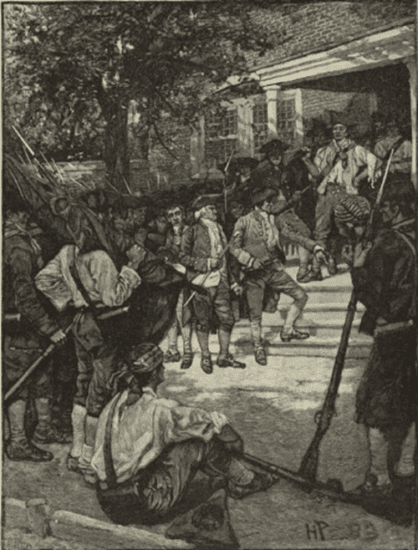
An 1884 illustration by Howard Pyle from Harper’s Magazine, “Shays’ mob in possession of a court-house.” Source: DPLA
In Massachusetts, though, wealthy financiers pressed for full repayment of debts — even though most war bonds, and the promissory notes the soldiers had received in place of pay, had been abandoned by their original holders. These notes were openly traded on exchanges at a fraction of their value, where they were bought up by wealthy financiers and speculators.
By 1785, many of these speculators served or had friends in Massachusetts Governor James Bowdoin’s government. When the legislature voted to pay the bonds and notes in full, in four annual payments — and to raise the money by levying taxes not on the Commonwealth’s businesses, but on regular people — the wealthy merchants were effectively paying themselves windfall profits at the people’s expense. The people complained in petitions, but Massachusetts’ aristocratic 1780 Constitution allowed the merchants in the Senate to stifle proposed reforms from the ‘lower house’ of the legislature.
Protests over similar conditions in Pennsylvania, Maryland, and Rhode Island led to reforms, as governments adjusted their debts to distribute the burden more fairly, but in Massachusetts, Governor Bowdoin pressed ahead with policies that threatened to seize the people’s livestock and farms, and sell them at auction, where wealthy men would buy them up at a discount. This made farmers fear that they would lose the liberties they had won, and be “brought under lordships” again.
One Massachusetts farmer wrote in an editorial that “nineteen parts of twenty of the public securities were possessed by merchants and opulent gentlemen in the maritime towns,” who were “accumulating fortunes by the general distress.” Another complained that the land was being sold “for about one-third of its value, our cattle about half.” This injustice led to inflammatory rhetoric in editorials, as another farmer wrote that
I’ve labored hard all my days and fared hard. I have been greatly abused, have been obliged to do more than my part in the war. . . . I have been obliged to pay and nobody will pay me. . . . I think it is time for us to rise and put a stop to it, and have no more courts, nor sheriffs, nor collectors, nor lawyers, and I know that we are the biggest party, let them say what they will. . . . We’ve come to relieve the distresses of the people.
Town officials throughout Massachusetts sent petitions to Boston, begging for reforms, but the legislature adjourned in July of 1786 without offering any relief. So on Aug. 29, 1,500 farmers from more than 50 towns surrounded the Northampton courthouse to prevent the foreclosure court from seizing livestock and land. The protestors drew upon a long English tradition of nonviolent, theatrical street protests, to show their countrymen that the government was acting unjustly.
When Governor Bowdoin responded to this peaceful protest by calling the protestors rebels and anarchists, farmers in Concord, Taunton, Worcester, and Great Barrington closed their courts in nonviolent protests. The government then issued arrest warrants and passed a repressive Riot Act that would seize protestors’ land and imprison them for a year, while indemnifying deputies against liability if they killed protestors. Samuel Adams even published an editorial claiming that “the man who dares rebel against the laws of a republic ought to suffer death.” In spite of these heavy-handed threats, the people maintained the peace while staging further protests, closing the courts through December.
Governor Bowdoin’s administration had dragged its feet for fear of sparking an actual rebellion, but he finally sent an army to disperse the protestors. When the farmers learned that an army was coming, they marched to the Springfield arsenal, to keep the government from using its weapons against them. They took cannon fire that killed four and wounded twenty, but instead of fighting, they fled, crying ‘murder, murder.’ About 1,000 men stayed with Shays and the other leaders, only to disband when Governor Bowdoin’s army pursued them in early February, but on April 1, 1787, the people of Massachusetts renounced Governor Bowdoin’s hard-line policies. In an electoral landslide. They elected John Hancock governor, to issue reforms and pardons.
While the farmers won their nonviolent resistance campaign, nationalists like Henry Knox described their protests as a ‘rebellion’ to generate fear among the “Founding Fathers,” hoping to convince George Washington to support a Constitutional Convention, to strengthen the Articles of Confederation. Unfortunately, historians have largely repeated Knox’ story, that we need a strong federal government to protect us from the threat that regular people might stand up for their rights — instead of the people’s story: that people need to band together to protect themselves when their government acts against their interests. Thomas Jefferson, writing from France, asked famously, “Can history produce an instance of a rebellion so honourably conducted?” adding, “God forbid we should ever be twenty years without such a rebellion.”
Only a few years later, in 1791, the federal government created an almost identical crisis, the “Whiskey Rebellion,” when it taxed whiskey distillers in order to pay the same exact war bonds and promissory notes, in full.
Daniel Bullen is the author of Daniel Shays’s Honorable Rebellion: An American Story.
Related Resources
Scene on Radio podcast season 4, episode 2: “The Excess of Democracy”
Song about Daniel Shays by David Rovics
People v. Job Shattuck 1975 National Geographic Society film
See more resources below.

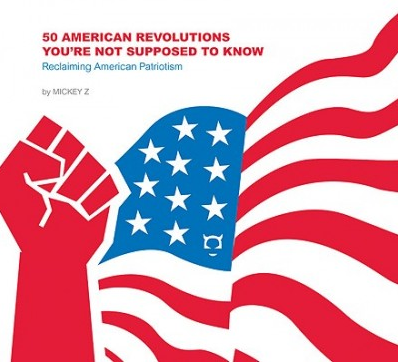
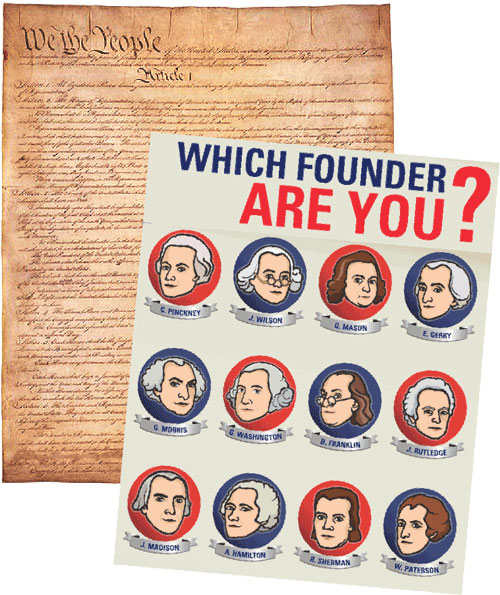
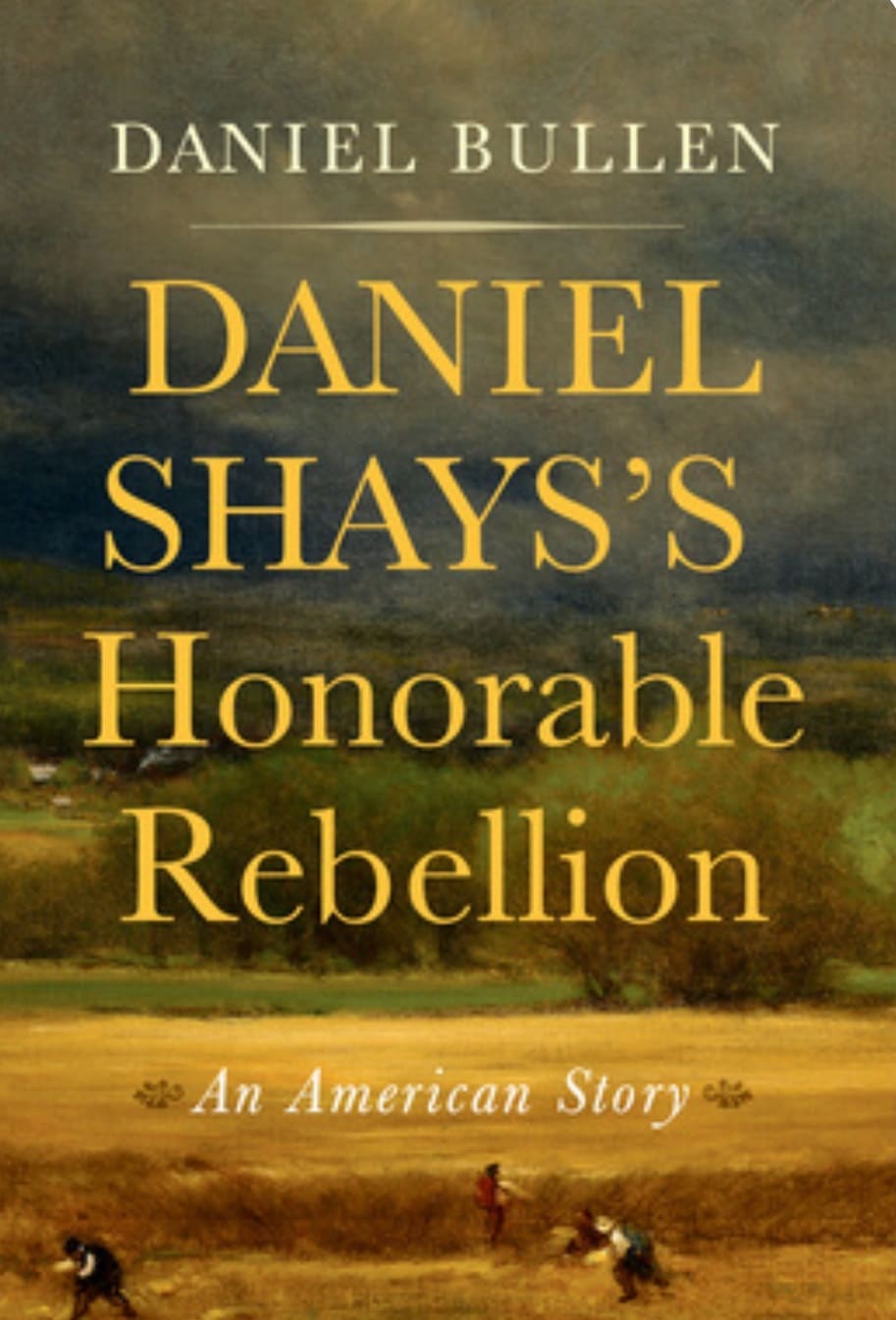
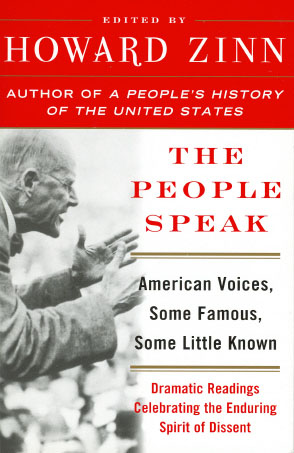





Twitter
Google plus
LinkedIn